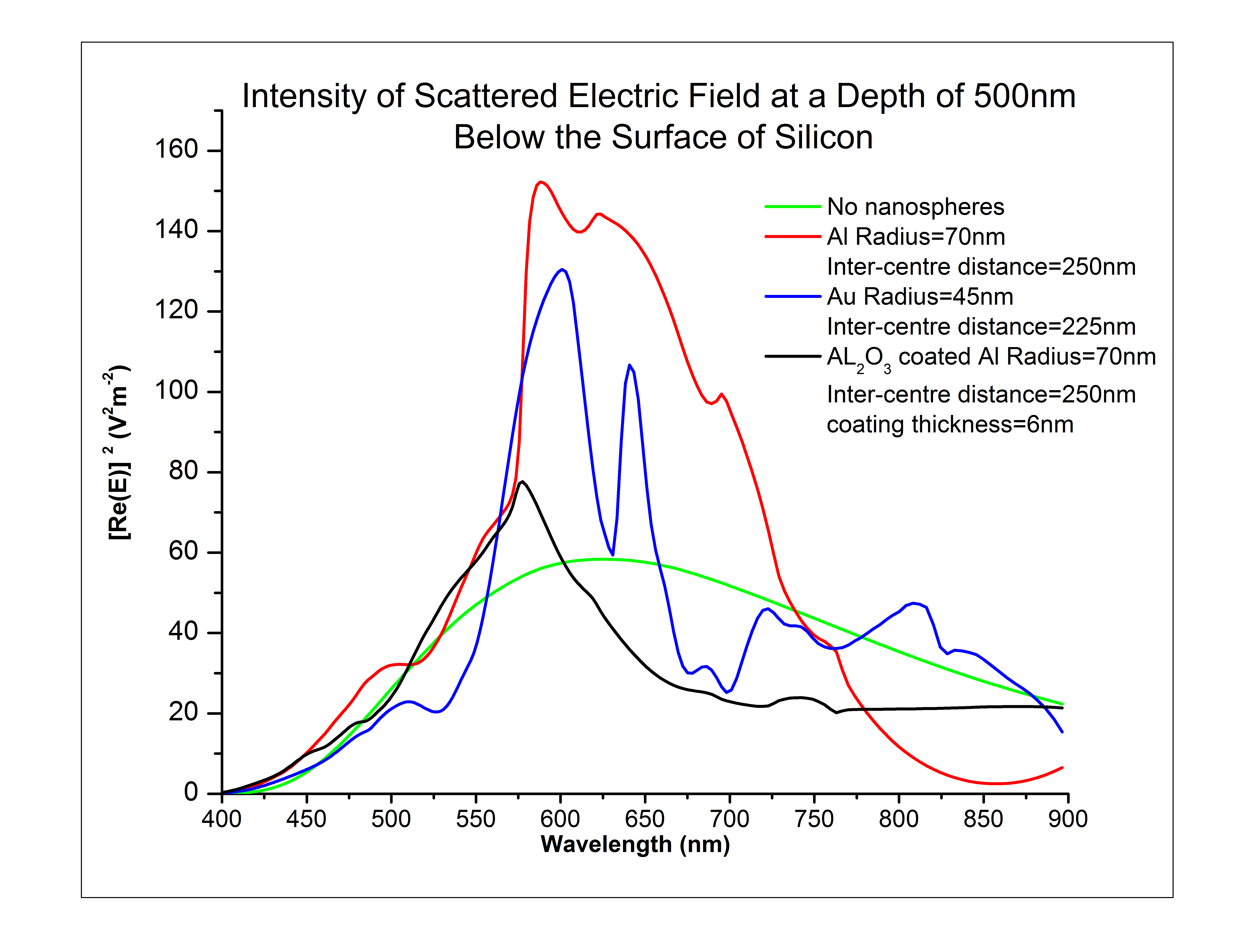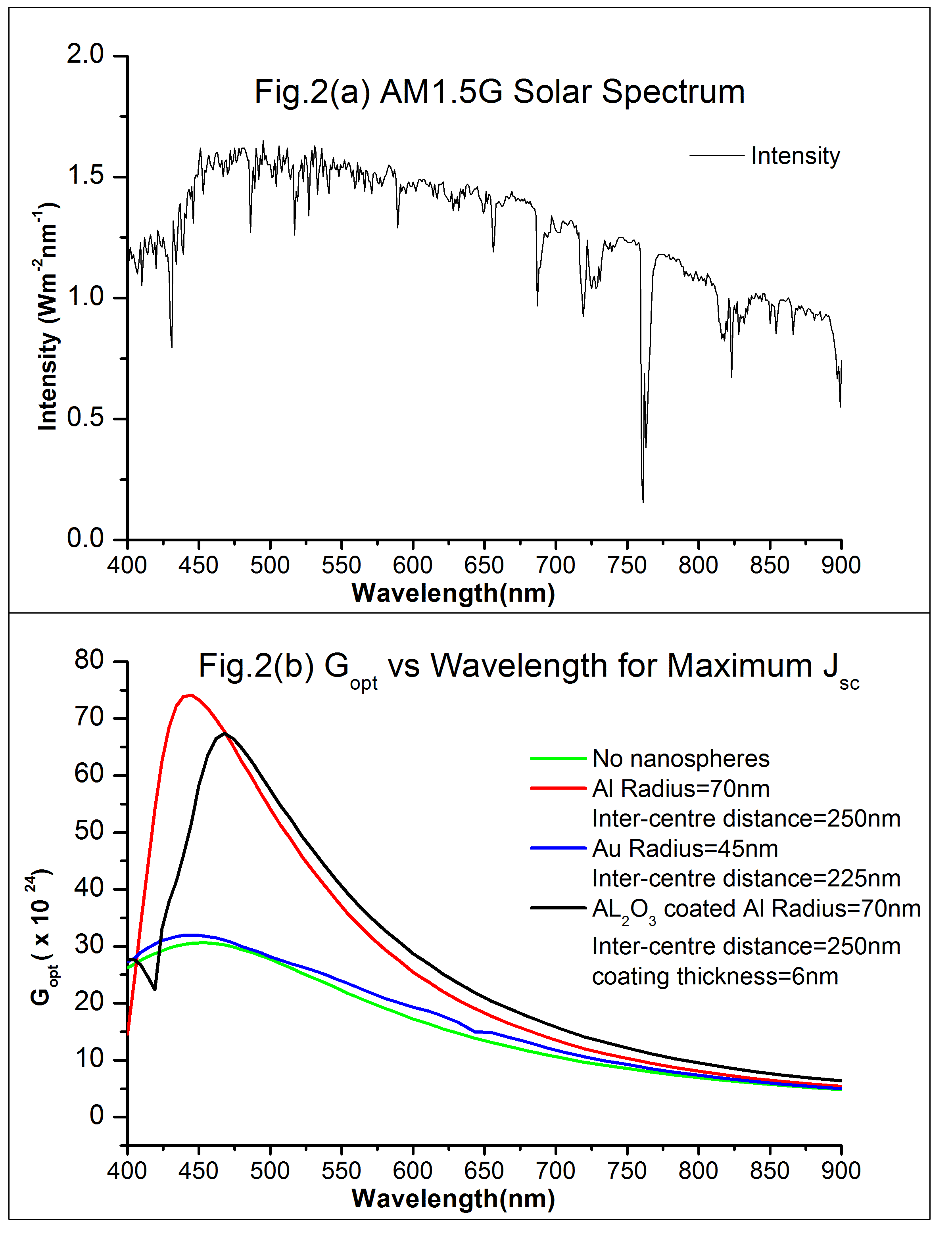
Light Trapping in Thin Silicon Substrate: Exciting Insights from Aluminum versus Gold Nanoplasmonic Simulations
The efficiency of photocurrent generation in a thin film solar cell is low due to incomplete absorption of incident solar radiation. Light trapping techniques such as the coupling of surface plasmons with the incident electromagnetic radiation can lead to enhanced absorption and photocurrent generation.[1] Apart from the conventional plasmonic metals like gold (Au) and silver, aluminum (Al) has also been reported to exhibit exciting plasmonic properties.[2]
We carried out Finite DifferenceTtime Domain (FDTD) simulations to compare the intensity of the scattered electric field, electron-hole pair generation rate (Gopt) and the photocurrent generation inside a thin silicon (Si) substrate patterned on the surface with Au and Al nanospheres. Even though Au has better plasmonic properties in the wavelength region of interest (AM1.5), our simulations indicate that the substrate patterned with Al nanospheres yield short circuit current density (Jsc) (112.57 A/m2) higher than that obtained with Au nanospheres (78.08 A/m2).[3] Furthermore, the sensitivity of Al towards oxidation has been a major deterrent in its use as a plasmonic metal. Simulations indicate that even Al2O3 coated (6 nm) Al yields a higher value of Jsc (87.86 A/m2).
Figure 1 shows that the electric field intensities for Al and Au are comparable. However, they do not translate into higher values of Gopt and Jsc for Au (Fig.2). This could be attributed to the dependence on the light source used to determine Jsc.
In summary, our simulations using Al nanospheres on thin Si substrate indicate the potential of Al to replace conventional plasmonic metals to enhance the photovoltaic efficiency of Si based thin-film solar cells.
[1]. Atwater, H. A; Polman, A. Nature Materials, 2010, 9, 205-213
[2]. Knight et al. ACS Nano, 2014, 8(1), 834-840
[3]. Stockman, M. I; Optics Express, 2011, 19(22), 22029-22106
sruthi.v1994@gmail.com


Powered by Eventact EMS